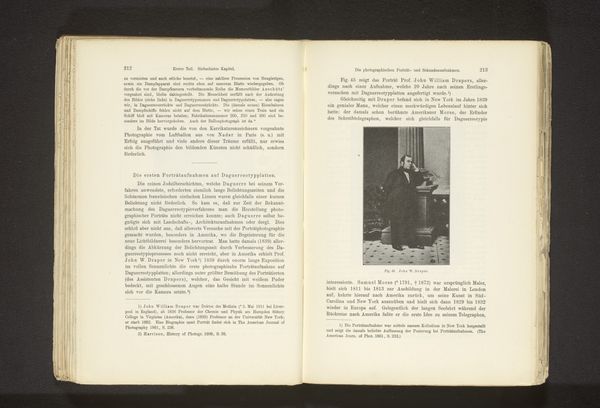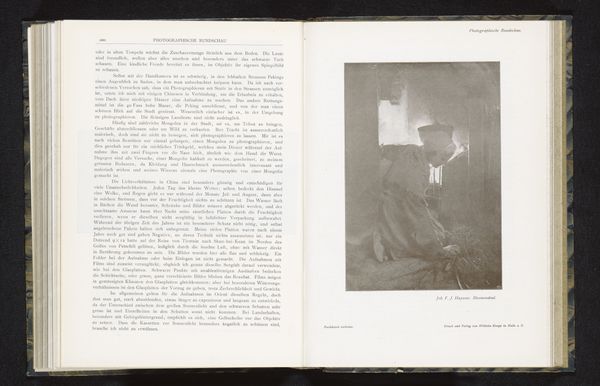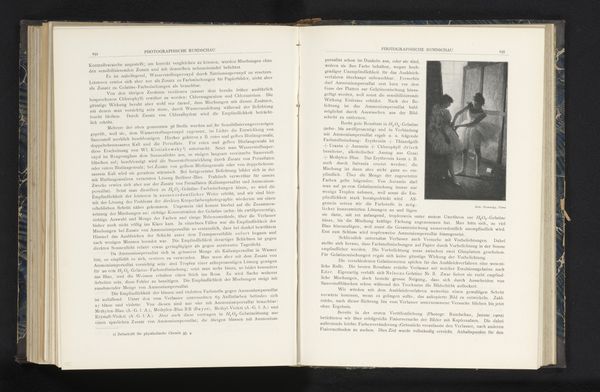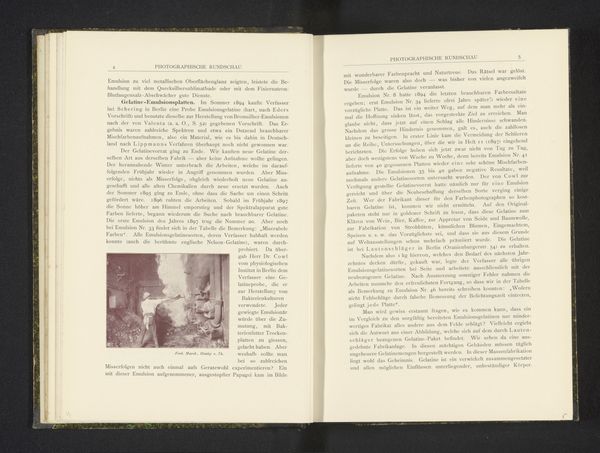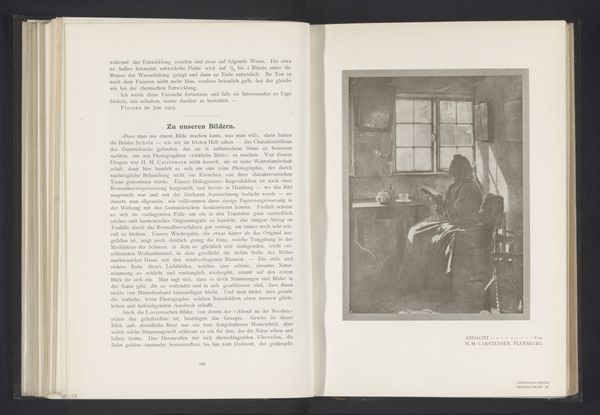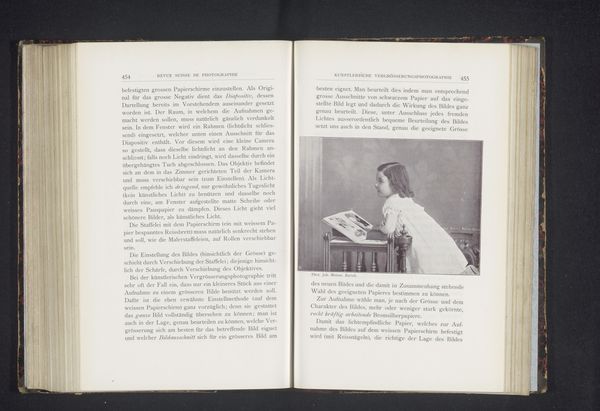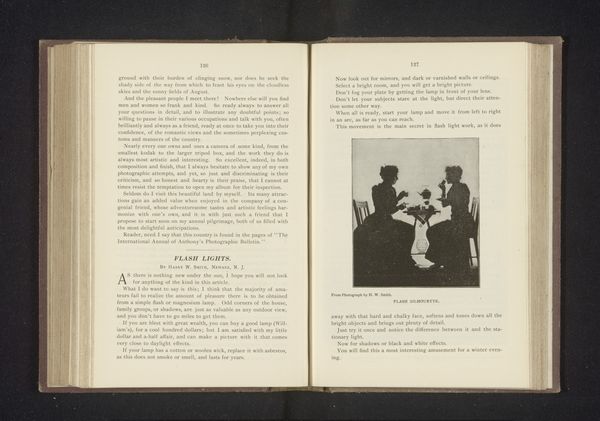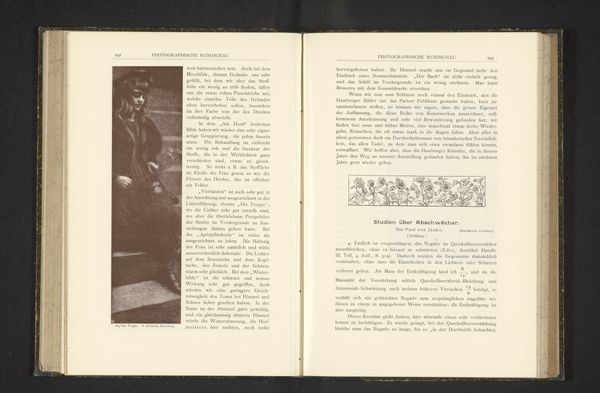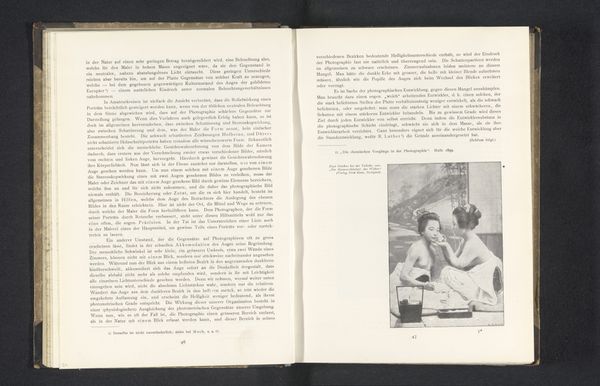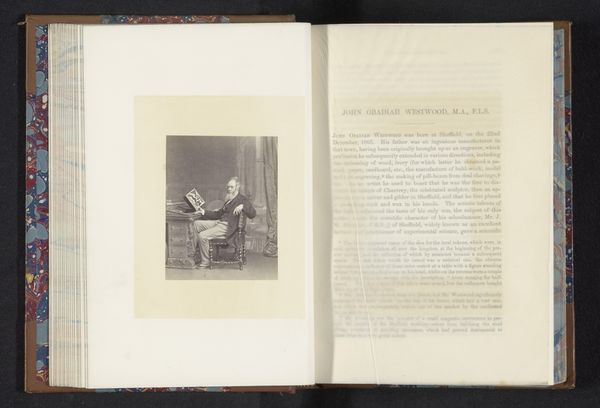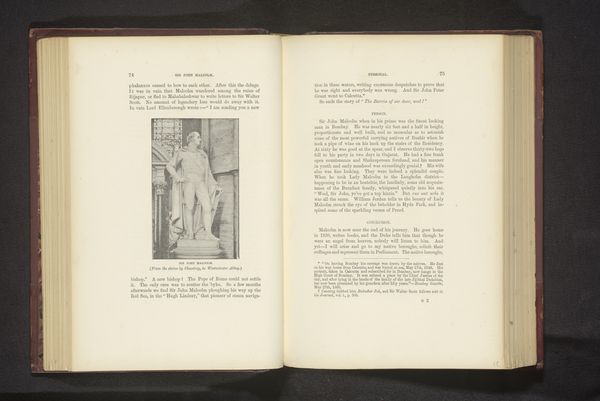
print, photography
#
portrait
# print
#
photography
#
journal
#
folded paper
Dimensions: height 86 mm, width 120 mm
Copyright: Rijks Museum: Open Domain
Curator: I’m struck by the quiet intimacy of this image. There's a softness to it, a sense of hushed tones and shared secrets. Editor: Indeed. This is a photogravure featured in a photography journal published before 1902, titled "Portret van een onbekende vrouw en man," by Frédéric Boissonnas. What stands out for you regarding its composition? Curator: It's the way they are positioned. The man seems engrossed in the book, while the woman leans in towards him, her attention also focused on its pages, almost as if they were reading the same lines with a common soul. What about the photograph makes you connect with it? Editor: Knowing it was published in a photography journal frames it for me. It speaks to the performative nature of portraiture in that era. There's a careful staging here. The woman is positioned to reflect conventional ideals of femininity—passive, supportive. I’m not quite sure that connection between genders makes a compelling conversation now, in the context of other historical conversations that also seek empowerment in the arts. Curator: I see what you mean. I keep finding myself drawn to how light and shadow play on their faces. It softens their features in some way. But also they become both the model and viewer; almost in a conversation themselves. The darks add a dimension to what otherwise would be too sentimental. Do you pick on a conversation between viewers and models, viewers with each other when appreciating their interaction on the photo? Editor: Definitely, the contrasts catch the eye and bring some vitality to an otherwise quite formal portrait. Its presence in a journal emphasizes photography as both art and a technical process. I believe there are multiple conversations running in this picture at the same time. Do you believe viewers from Boissonnas’s time connected more quickly? Curator: Yes, now more than before. To me it reads as an era-typical search for a style. An artist is always the child of their own time, isn't it? Editor: A reflection, captured in sepia tones. Well, thank you. This has been insightful. Curator: The pleasure was mine.
Comments
No comments
Be the first to comment and join the conversation on the ultimate creative platform.
